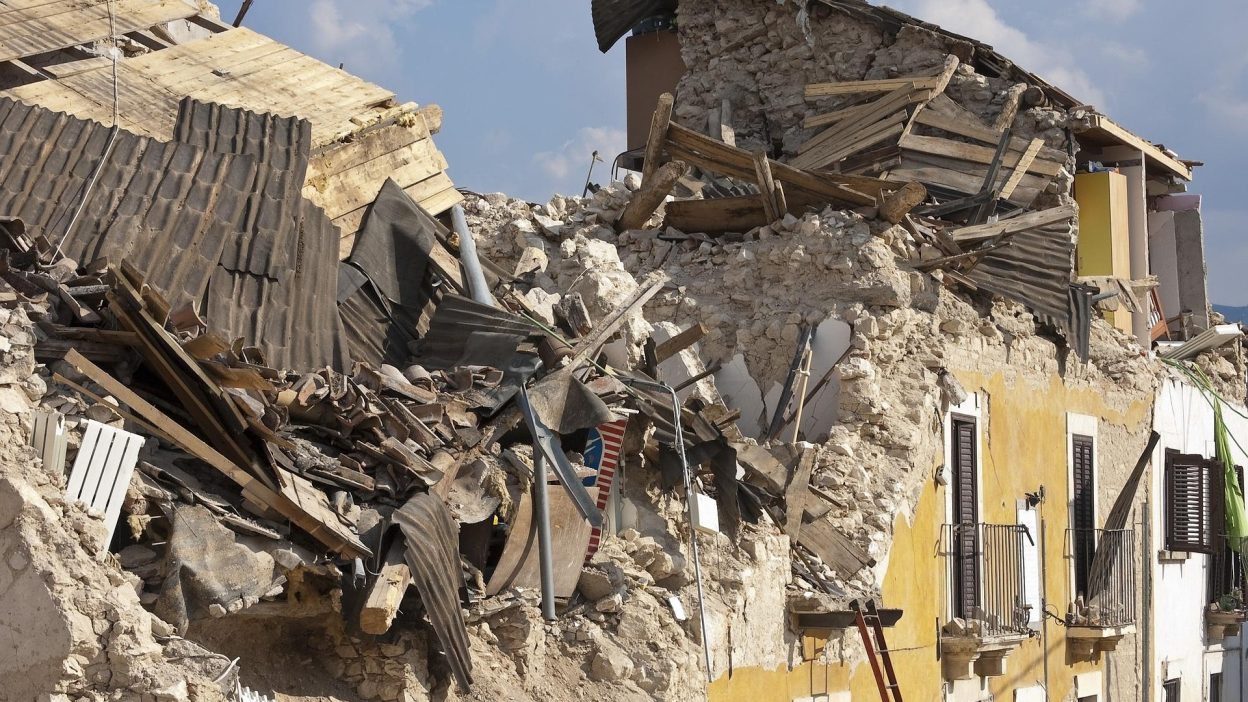2018 Sulawesi Earthquake And Tsunami: The Disaster That Stunned The World
1. The Day Sulawesi Trembled: A Disaster That Changed Lives Forever
On 28 September 2018, Indonesia witnessed one of its deadliest natural disasters when the island of Sulawesi was struck by a powerful 7.5 magnitude earthquake, followed by a massive tsunami. Within moments, a normal evening turned into sheer chaos as the earth violently shook, tearing apart homes, roads, and infrastructure. The tremors, which lasted for around six minutes, caused panic among residents, forcing them to flee into the streets in terror.
The disaster, however, did not end with the earthquake. The sudden movement of the seabed triggered a massive tsunami, with waves as high as 6 metres (20 feet) crashing into the coastline. The city of Palu and surrounding areas bore the brunt of the catastrophe, with entire neighbourhoods submerged and washed away in mere moments. With no time to escape, thousands of people were dragged into the sea, while others were buried under the rubble of collapsing buildings.
What made this tragedy even more horrifying was the failure of the tsunami warning system, leaving residents completely unaware of the approaching waves. The lack of preparedness, coupled with the intense force of nature, resulted in one of Indonesia’s worst disasters in recent history.
2. How the 2018 Sulawesi Earthquake and Tsunami Unfolded
At 18:02 local time, an undersea earthquake struck just 77 km (48 miles) north of Palu, originating at a depth of 10 km (6.2 miles). This depth made the tremors extremely intense, causing widespread structural damage. The fault responsible for the earthquake was a strike-slip fault, which is known for horizontal ground movement. However, scientists were shocked to see that despite this type of fault typically not triggering large tsunamis, Sulawesi experienced an unusually massive one.
Within seconds, buildings crumbled like sandcastles, roads split open, and bridges collapsed into rivers. The violent shaking also caused landslides, cutting off entire regions from help. People were seen running in terror, desperate to find safety, but within minutes, another horror struck—a tsunami was fast approaching.
With waves travelling at speeds of up to 800 km/h (500 mph) in deep water, the tsunami raced towards the shore, gathering height as it reached shallow waters. By the time it hit Palu, the waves had grown to an enormous 6 metres high, crashing into homes, businesses, and mosques, pulling everything in its path into the sea. The water rushed inland, destroying everything in a matter of minutes.
3. The Human Cost: Deaths, Injuries, and the Sheer Scale of Devastation
- Thousands of Lives Lost: Official reports confirmed that over 4,340 people lost their lives, but the actual number is believed to be even higher as many bodies were never recovered. Entire families were wiped out in an instant.
- Massive Number of Injuries: More than 10,000 people were injured, with many suffering broken bones, severe wounds, and crush injuries due to collapsing structures. Hospitals were overwhelmed, forcing doctors to perform surgeries with limited resources.
- Over 70,000 Displaced: The disaster left tens of thousands homeless, forcing survivors to seek shelter in makeshift camps. Many struggled with hunger, thirst, and disease due to the unsanitary conditions.
- Unimaginable Property Loss: More than 70,000 buildings, including homes, schools, and hospitals, were either completely destroyed or severely damaged. Infrastructure such as bridges and roads were wiped out, making rescue operations nearly impossible.
4. A Warning That Never Came: Why the Tsunami Caught Everyone Off Guard
Indonesia has a tsunami warning system in place, designed to alert people when a potential tsunami is detected. However, on this fateful day, the system failed disastrously. The network of buoys and sensors, meant to detect sudden shifts in the ocean, had not been maintained for years, rendering them completely useless.
To make matters worse, the official tsunami warning issued after the earthquake was lifted too soon—just 34 minutes later—even though the tsunami had not yet made landfall. By the time residents in Palu realised what was happening, it was already too late. Thousands of lives could have been saved if the warning system had functioned properly.
This tragic failure raised serious concerns about Indonesia’s disaster preparedness. Experts warned that if drastic measures weren’t taken to fix these issues, the country would continue to suffer unnecessary and preventable deaths in future disasters.
5. Palu: A City That Turned Into a Graveyard
Palu, a vibrant coastal city, was turned into a scene of absolute devastation within minutes. The force of the tsunami destroyed everything in its path, from bustling markets to mosques filled with worshippers. Survivors recalled hearing the deafening roar of water before seeing massive waves swallowing everything.
Bridges collapsed, trapping people on both sides. Entire houses were lifted off the ground and carried away by the raging waters. In the aftermath, the once-busy streets of Palu were filled with bodies, wrecked cars, and debris, creating an eerie, post-apocalyptic landscape. With power lines down and communication systems destroyed, rescue operations were severely hindered, leaving survivors stranded without food or water for days.
6. When the Earth Turned to Liquid: The Deadly Liquefaction of Sulawesi
One of the most horrifying aspects of this disaster was the phenomenon of liquefaction, which turned solid ground into a deadly, moving mass of mud. This occurred because Sulawesi’s soil contained high levels of moisture, which, under extreme seismic shaking, caused it to lose its strength and behave like a liquid.
This resulted in entire villages disappearing beneath the ground. In areas like Petobo and Balaroa, homes, trees, and even cars were sucked into the earth, leaving only mud-covered ruins behind. Residents had no chance of escape—those caught in liquefaction were buried alive, their bodies never recovered.
7. A Nation Struggles: Delayed Aid and Government Mismanagement
- Aid Arrived Too Late: Emergency aid was slow and uncoordinated, leaving survivors without food, water, or medical care for days.
- Overwhelmed Hospitals: With thousands injured, hospitals ran out of supplies, forcing medical staff to perform surgeries without proper equipment.
- Looting Became a Means of Survival: Desperate and starving, survivors were forced to loot supermarkets for basic necessities.
- International Help Was Delayed: Even though several countries offered aid, bureaucratic delays slowed down relief efforts, costing lives.
8. Indonesia’s Future: A Time Bomb for More Disasters
Indonesia is no stranger to natural disasters. Sitting on the Pacific Ring of Fire, the country experiences frequent earthquakes, tsunamis, and volcanic eruptions. The 2018 Sulawesi catastrophe was a devastating reminder that Indonesia remains highly vulnerable to nature’s fury. However, what makes future disasters even more alarming is the lack of preparation and investment in disaster mitigation.
Scientists have already identified numerous active fault lines across Indonesia, particularly in Sumatra, Java, and Sulawesi, which could generate earthquakes even more powerful than the 2018 event. Some of these faults, such as the Mentawai and Sunda megathrusts, have the potential to unleash massive tsunamis, far worse than what Sulawesi experienced.
To make matters worse, rapid urbanisation and poorly enforced building regulations mean that millions of Indonesians are living in high-risk areas, in homes that cannot withstand strong tremors. If proper action is not taken, the next disaster could result in even greater casualties and destruction.
The Sulawesi tragedy should have been a wake-up call, but has Indonesia truly learned from it? Or is the nation still sitting on a ticking time bomb?
9. Lessons Learned: The Mistakes That Should Never Be Repeated
The 2018 Sulawesi disaster exposed serious flaws in Indonesia’s disaster management and response systems. Many of the deaths and injuries could have been prevented if proper precautions and infrastructure had been in place. This catastrophe must serve as a lesson to avoid similar tragedies in the future.
One of the biggest failures was the lack of a functioning tsunami warning system. Had the sensors been properly maintained, thousands of lives could have been saved. Moving forward, Indonesia must invest in advanced early warning technology and ensure that all equipment is regularly tested and maintained.
Additionally, strict building regulations must be enforced. Many structures collapsed because they were not designed to withstand earthquakes. If Indonesia wants to protect its people, it needs to implement earthquake-resistant construction in all high-risk areas.
Another critical issue was the slow and unorganised disaster response. Survivors were left without food, water, or medical aid for days, increasing the death toll. Future disaster response efforts must be faster, more efficient, and better coordinated to prevent unnecessary suffering.
The lessons from Sulawesi are clear: if Indonesia does not take drastic action to improve its disaster preparedness, the next catastrophe could be even more deadly.
10. Sulawesi’s Unfinished Battle: The Struggles That Continue
Years after the disaster, thousands of survivors are still struggling to rebuild their lives. Many remain in temporary shelters, living in poor conditions with limited access to clean water, healthcare, and education. The Indonesian government promised to rebuild affected communities, but progress has been painfully slow.
Mental trauma also continues to haunt survivors. Many people lost entire families, and the memories of the earthquake and tsunami still cause anxiety and fear. Children, in particular, have suffered immense psychological distress, with many showing signs of post-traumatic stress disorder (PTSD).
Economic recovery has also been a major challenge. Many businesses were destroyed, and thousands of people lost their jobs. The once-thriving city of Palu is still struggling to regain its former stability, and many people have been forced to migrate elsewhere in search of work.
The battle is far from over for Sulawesi’s survivors. While the world has moved on, many are still waiting for real support. The question remains: Will these people ever get the help they desperately need, or will they be left to suffer in silence?
Frequently Asked Questions (FAQs)
1. What caused the 2018 Sulawesi earthquake and tsunami?
The disaster was caused by a 7.5 magnitude earthquake that struck off the coast of Sulawesi. The earthquake triggered a 6-metre-high tsunami, which devastated coastal areas.
2. How many people died in the Sulawesi earthquake and tsunami?
Over 4,340 people lost their lives, but the actual death toll may be much higher as many bodies were never found. More than 10,000 people were injured, and tens of thousands were displaced.
3. Why did the tsunami warning system fail?
Indonesia’s tsunami warning buoys were not functioning due to poor maintenance. Additionally, the official warning was lifted too early, leaving residents unprepared for the incoming waves.
4. What is liquefaction, and how did it affect Sulawesi?
Liquefaction occurs when soil loses its strength due to intense shaking, turning into a liquid-like state. In Sulawesi, entire villages sank into the ground, burying thousands of people alive.
5. Is Indonesia at risk of more earthquakes and tsunamis?
Yes, Indonesia sits on the Pacific Ring of Fire, making it one of the most earthquake-prone countries in the world. Experts warn that more major earthquakes and tsunamis are likely in the future.




